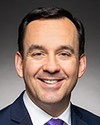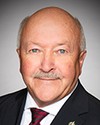Thank you for the question.
Indeed, in 2018, the transition group was stood up. As was just mentioned, it's a very stressful moment in someone's life when transitioning to being a civilian. We work closely with VAC to deliver personalized, professional and standardized services, either in casualty support or transition services, to the members but also their families. We do that with a variety of partners that are co-located with us in our transition centres.
I understand that you were briefed earlier in the sessions by Colonel Lisa Noonan, who touched a little on the transition centres and the services. Essentially, we oversee.... A transition adviser is assigned to somebody who is transitioning. They make a transition plan over seven domains of well-being, whether that be a sense of purpose, finances, health, social integration, life skills, housing and physical conditions, or cultural and social environment.
It's a team approach to making sure that the CAF members who are transitioning to veteran and civilian life will have a good plan to ensure that there are no gaps. Veterans Affairs Canada is embedded with us at our transition centres.
I need to caveat that by July, 75% of our transition centres will be established. At this time, we expect to be at full operational capability by April 2024.




